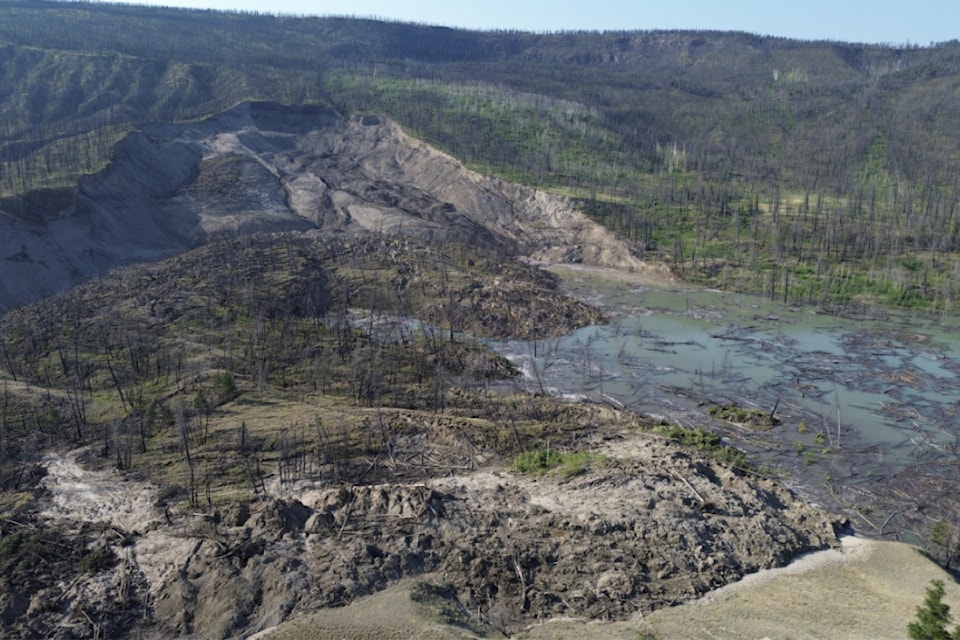Water could start to move over (overtop) the Chilcotin River landslide blockage late on Sunday, Aug. 4, 2024, or early on Monday, Aug. 5, 2024, and enter the riverbed downstream, said the province in an update issued Sunday evening.
"There has been minimal seepage of water through the natural dam created by the landslide on Tuesday, July 30, 2024, so the water level behind the dam has continued to increase steadily in recent days," noted a new release.
As of Sunday, the water is rising at a rate of about 18 centimetres per hour.
As refinement of data continues, inputs into the 2D model have allowed for updates to the model. The best and more-likely scenario is still that it would take 12 to 24 hours for the trapped water to move through and past the blockage.
This is expected to result in flows below typical freshet (spring flooding) peaks on the Fraser River, though far above freshet peaks on the Chilcotin River. In the 12-hour scenario, the peak flows in the Chilcotin River could be over 10 times greater than a typical freshet peak flow. In the 24-hour scenario, the peak flow could be over seven times greater than a typical freshet peak flow.
In the worst-case scenario, where the lake behind the dam drains very rapidly (within one hour), updated modelling shows higher flows than presented yesterday: significantly higher on the Chilcotin River, and flows at or below freshet flows on the Fraser River. In this scenario, the water in the Chilcotin River could potentially rise to 21 metres at the Farwell Canyon bridge and 12 metres where the Chilcotin River meets the Fraser River. Peak flows in the Fraser River at Lillooet could be similar to or just above a typical freshet-peak flow.
On Sunday evening, Aug. 4, the Cariboo Regional District issued an evacuation order for two parcels in the Churn Creek Bridge area.
The peak flow could take 12-13 hours to reach Lillooet. Communities have been provided with the updated modelling.
Though similar to elevation of heights during freshet flows, the water will react differently, with greater momentum and force, than a gradual increase in water levels.
People are urged to keep out of the Chilcotin River valley between Hanceville and the confluence of Fraser River. An evacuation order issued by the Cariboo Regional District remains in place. People are also advised to stay away from the banks of the Fraser River. Planning continues to address potential impacts of debris as it relates to public safety.
Risks to public safety include the potential for further landslides upstream of the natural dam and downstream of the dam once water begins to flow past it.
The landslide incident poses potential impacts to spawning salmon and other fish species. The Province is working with First Nations and Fisheries and Oceans Canada to establish an incident command structure, mobilize resources and plan mitigation efforts.
The Province is preparing for all possible outcomes since modelling does not provide guarantees. Provincial personnel and partnering agencies continue to work day and night to gather real-time information from the site, to prepare for any mitigation that may be necessary, and to keep people in British Columbia informed and safe. The Province will continue to share the latest information with the public as it becomes available.
As water makes its way down the Chilcotin River and Fraser River, the Province will monitor water levels and will continue to provide updates. Real-time water-level monitoring information is publicly available through the Water Survey of Canada: https://wateroffice.ec.gc.ca/


